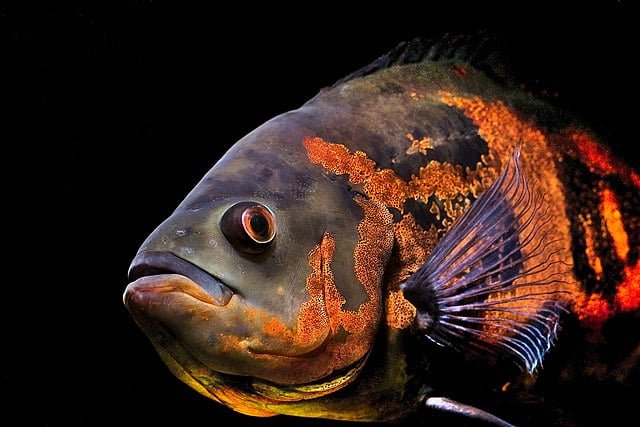
The success of any aquaculture operation depends on maintaining optimal water quality for your fish. At AquaHoy, we understand this critical aspect and are excited to present an innovative development: a low-cost integrated system designed for real-time monitoring of crucial water quality parameters in your ponds!
Researchers from IIT Kharagpur (India), ICAR, and JNKVV Jabalpur published a study in the Journal of Scientific Research and Reports, detailing the development of an integrated system designed for real-time monitoring and control of water quality parameters (temperature, turbidity, and pH levels) in aquaculture ponds.
Why Water Quality Monitoring in Aquaculture is Important
- 1 Why Water Quality Monitoring in Aquaculture is Important
- 2 Traditional Monitoring Methods: Limitations and Challenges
- 3 The Future of Aquaculture is Here: Real-Time Monitoring with Integrated Systems
- 4 The Science Behind the Innovation
- 5 A Powerful and User-Friendly Design
- 6 Accuracy You Can Trust
- 7 Cost-Benefit Ratio: A Winning Advantage
- 8 Benefits for Your Aquaculture Business
- 9 Entradas relacionadas:
Maintaining the growth of the aquaculture industry requires constant vigilance over water quality. Key parameters like dissolved oxygen, temperature, turbidity, and pH significantly affect fish health, growth rates, and overall pond productivity. By closely monitoring these factors, you can:
- Prevent environmental damage and potential ecological imbalances.
- Reduce the risk of disease outbreaks that can devastate your fish population.
- Optimize feeding practices and resource allocation for better profits.
- Ensure optimal growth conditions for your fish, leading to greater profitability.
Traditional Monitoring Methods: Limitations and Challenges
Traditionally, aquaculture water quality monitoring relied on manual measurements using standalone instruments like pH meters and Secchi disks. While effective, these methods have limitations:
- Time-consuming and labor-intensive: Manual monitoring requires frequent checks, increasing operational costs.
- Limited data collection: Spot checks may not capture the full picture of water quality fluctuations.
- Prone to human error: Manual readings can be subjective and susceptible to inaccuracies.
The Future of Aquaculture is Here: Real-Time Monitoring with Integrated Systems
Recent advances in sensor technology have paved the way for innovative solutions like integrated systems designed specifically for aquaculture. These systems offer significant advantages:
- Real-time monitoring: Continuous data collection on critical water quality parameters.
- Automated data collection: Eliminates the need for manual measurements, saving time and resources.
- Accurate and reliable data: Sensors provide precise readings, minimizing human error.
- Cost-effective: The article describes a low-cost integrated system that makes the technology accessible to a wider range of aquaculture operations.
The Science Behind the Innovation
Researchers have developed an innovative integrated system specifically designed for aquaculture. This system allows you to continuously monitor critical water quality factors such as:
- Temperature: Essential for fish health, growth, and metabolic processes.
- Turbidity: Indicates water clarity, affecting light penetration and oxygen levels.
- pH Level: Crucial for maintaining a healthy balance for your fish and beneficial microbes.
A Powerful and User-Friendly Design
This innovative system integrates seamlessly into your aquaculture setup. Here’s how it works:
- Sensors: Specialized temperature, turbidity, and pH sensors continuously measure these parameters in your pond water.
- Processing Unit: An Arduino Mega board acts as the brain of the system, collecting data from the sensors and performing the necessary calculations.
- Display: A clear LCD screen shows real-time readings of all monitored water quality parameters, allowing you to make informed decisions at a glance.
Accuracy You Can Trust
Researchers meticulously compared the integrated system’s readings with traditional instruments such as a pH meter and Secchi disk. The results were impressive, showing an error margin of:
Stay Always Informed
Join our communities to instantly receive the most important news, reports, and analysis from the aquaculture industry.
- 0.9% for pH
- 1.2% for temperature
- 1.9% for turbidity
These minimal discrepancies demonstrate that the integrated system offers readings that are virtually indistinguishable from traditional methods.
Cost-Benefit Ratio: A Winning Advantage
This innovative system not only delivers impressive performance but also comes at an affordable price. With an estimated development cost of around Rs. 7000 (approximately USD $88), it offers a highly cost-effective solution for real-time water quality monitoring.
Benefits for Your Aquaculture Business
By continuously monitoring your pond’s water quality, you can:
- Proactively manage fish health and growth.
- Optimize aeration and filtration systems.
- Reduce the risk of disease outbreaks.
- Improve the overall pond environment and sustainability.
This integrated system marks a significant leap forward for aquaculture technology. With real-time water quality monitoring at your fingertips, you can create a thriving environment for your fish while maximizing your business potential.
Contact
Ajay Kushwah
ICAR-IARI, New Delhi, 110012, India.
Email: ajay.kushwah98@gmail.com
Reference (open access)
Tiwari, Shivang, Ajay Kushwah, Shravan Kumar, Indraveer Singh, Ramineni Harsha Nag, Preeti Bhagat, and Rashmi Yadav. 2024. “Innovation of a Low-Cost Water Quality Monitoring System in Aquaculture Ponds”. Journal of Scientific Research and Reports 30 (9):616-23. https://doi.org/10.9734/jsrr/2024/v30i92389.
Editor at the digital magazine AquaHoy. He holds a degree in Aquaculture Biology from the National University of Santa (UNS) and a Master’s degree in Science and Innovation Management from the Polytechnic University of Valencia, with postgraduate diplomas in Business Innovation and Innovation Management. He possesses extensive experience in the aquaculture and fisheries sector, having led the Fisheries Innovation Unit of the National Program for Innovation in Fisheries and Aquaculture (PNIPA). He has served as a senior consultant in technology watch, an innovation project formulator and advisor, and a lecturer at UNS. He is a member of the Peruvian College of Biologists and was recognized by the World Aquaculture Society (WAS) in 2016 for his contribution to aquaculture.




